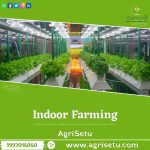- May 27, 2023
- By admin
- Future Farming, IPM
- (0) Comment Post Views : 980

Introduction:
Transitioning to sustainable farming techniques can seem daunting for many farmers. However, with the right knowledge and practical guidance, the adoption of environmentally friendly practices becomes more achievable. This blog provides a step-by-step guide to implementing sustainable farming techniques, including organic farming, permaculture, regenerative agriculture, and conservation agriculture.
Assessing Your Farm’s Needs:
Before making any changes, it is crucial to assess your farm’s specific needs and limitations. This section outlines the key factors to consider, such as soil type, climate, available resources, and market demands. It emphasizes the importance of understanding your farm’s context to make informed decisions.
Education and Training:
Acquiring knowledge and skills is fundamental to successfully implementing sustainable farming techniques. This section discusses various educational resources, such as workshops, courses, online platforms, and agricultural extension services. It also highlights the importance of networking and knowledge-sharing within the farming community.
Planning and Design:
Creating a comprehensive plan is essential for a smooth transition to sustainable farming. This section guides farmers through the process of designing their farms, considering factors like crop selection, farm layout, water management, and the integration of livestock. It emphasizes the need to incorporate biodiversity and ecological principles into the design.
Gradual Implementation:
Implementing sustainable farming techniques can be a gradual process, especially if you’re transitioning from conventional practices. This section provides practical tips on how to phase in changes, such as starting with small plots, experimenting with cover crops, or implementing one sustainable technique at a time. It emphasizes the importance of learning from experience and adapting strategies accordingly.
Monitoring and Evaluation:
Regular monitoring and evaluation help track progress and identify areas for improvement. This section highlights the importance of record-keeping, soil testing, and observing changes in crop yields and ecosystem health. It also discusses the role of feedback loops in refining and optimizing sustainable farming practices.
Overcoming Challenges:
Transitioning to sustainable farming techniques can present challenges, such as financial constraints, knowledge gaps, and resistance to change. This section provides guidance on overcoming these obstacles, including seeking financial assistance, collaborating with experienced farmers, and gradually building skills and knowledge over time.
Conclusion:
Implementing sustainable farming techniques is a journey that requires careful planning, education, and perseverance. By following this practical guide, farmers can take concrete steps towards adopting environmentally friendly practices and contribute to the long-term sustainability of agriculture.





